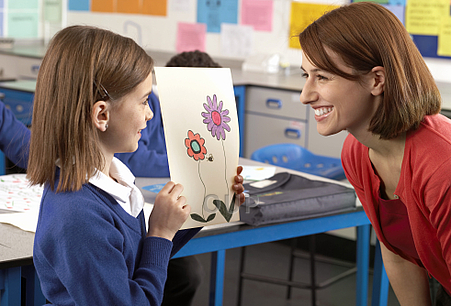
When I was a schoolboy, research into the area of learning styles and individual differences was receiving significant attention. However, the idea of differentiated learning had not taken root in any significant or practical way in the classroom: its time had yet to come.
At school we were taught that “one size fitted all”; as if we all learned the same thing in the same way. This often meant that we weren’t taught according to how we learned best, but according to how our teacher learned best. In other words, the teacher’s teaching style was probably influenced by their own learning style. What was your experience at school?
(I hope I don’t sound too critical of my teachers. They worked hard and under difficult circumstances. After all, they had me in the classroom; not an easy situation.)
It is perfectly understandable that my teachers wanted to pass on what had successfully worked for them. After all, if it hadn’t worked, they wouldn’t have been the teacher!
So, they transferred the style that had worked for them as a pupil to the children they were now teaching. If a pupil’s learning style matched the teacher’s, the pupil had a better chance of being successful. If the two styles did not match, then the pupil had less chance of being successful.
In fact, is it possible to take it a step further? The teacher had moved through the education system successfully. The child whose learning style matched the teacher’s also probably matched the exam system! If you think about it, it was a self-sustaining circle that slowed down change and progress. Or it at least meant that some children were doomed to failure.
Perhaps I am being unfair in my analysis. What do you think?
Early in my career I was fortunate to work with a group of teachers who seemed to be gifted at teaching younger learners. Twenty years later I got the chance to collaborate with one of them again. How lucky do you get?
An area that interests us both is the learner as an individual. A question that challenges is how material and the teacher can adapt to the individuality of the children. Some of our answers are reflected in the material that we have produced.
Let’s look at the downside first. As an example, I can spend a number of lessons doing a little dramatic performance. The learners who like acting and group activities will enjoy themselves and probably learn a lot. The children who like to work individually on tasks will probably feel less engaged.
Simply put, there are differences between all learners. Differences in their likes and dislikes. Differences in what they are good at and what they are not quite so good at. Differences in what they like to learn and what doesn’t interest them. It can include learning styles and strategies, aptitude, gender age and culture.
But I need to teach all of the children. So what can I do about this? How can I take their differences into account?
Well, for a start I can try to be aware of their individuality and different learning styles. I can try to be aware that in any classroom there is going to be a range of different learner types.
This means that I need to make sure that I cover the same language in different ways – in a story, in a song, in a puzzle, in a game – so that the children have the chance to engage successfully with at least one of the activities. I need to check the material I am using to ensure that there is a range of activities that will appeal to different learner types. I can try to push as many of their learning “buttons” as I can.
What is differentiated learning? It is taking the differences in learning styles into account with how I teach and with the materials that I use. In an ideal classroom, all the children should be engaged in tasks that enable them to be successful and ensure they are learning.